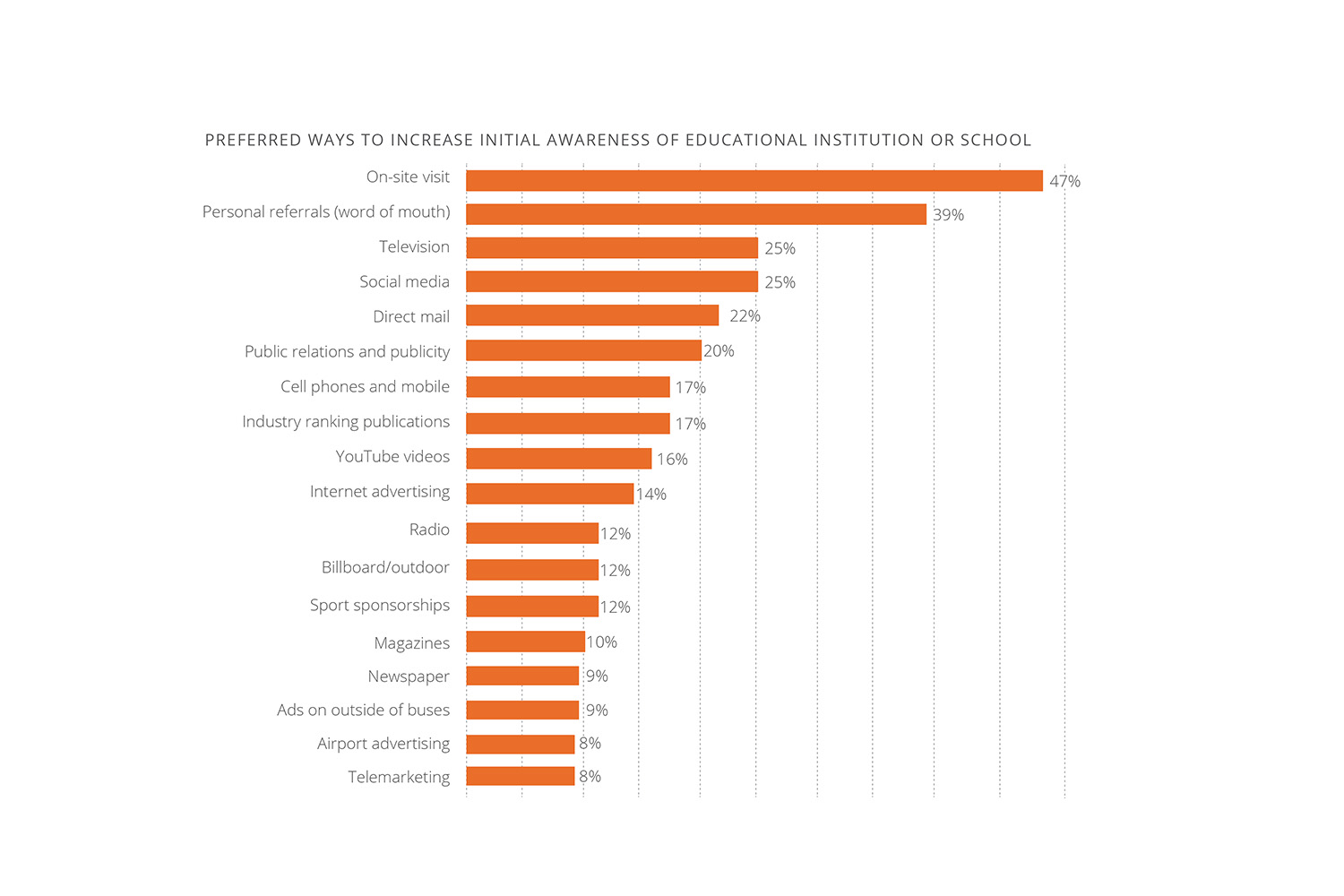Sign up for our LAVY email
and get our bi-monthly newsletter.
This article is a brief abstract of our exclusive study that takes the guesswork
out of education advertising and marketing.
Download LAVIDGE Education Marketing Research and Insights, Volume 1.
How welcoming your campus is to current students and guests matters more than you might think when it comes to recruiting potential students.
 Overwhelmingly, our study respondents ranked their experience during on-site visits to your campus as most influential at 47% followed by personal referrals/word-of-mouth (39%) when first learning about their options.
Overwhelmingly, our study respondents ranked their experience during on-site visits to your campus as most influential at 47% followed by personal referrals/word-of-mouth (39%) when first learning about their options.
This underscores the importance of maintaining a user-friendly campus. Everything needs to be accessible, orderly and welcoming. If the experience is frustrating, it isn’t likely that potential students will walk away feeling warmly toward your school.
American School & University recommends focusing on hospitality, culture, context, flexibility and user expectations to develop an integrated wayfinding program to make visitors feel welcome and confident while visiting your campus.
“A comprehensive approach to wayfinding means that a university has made an internal commitment to ‘speak in one voice’ to its visitors,” the article states. “That means the built environment will be identical, in terms of wayfinding information and logic, to the other ways that the university communicates. Building this system makes the campus more legible, understandable and therefore more hospitable to visitors.”

In addition, the morale of current students whom guests encounter, as well as the opinions of your graduates, are paramount. Finding ways to meet student needs and keep the alumni engaged long after graduation can significantly increase chances that they will recommend you to others.
This is particularly true in a post-Varsity Blues college admissions scandal era when tensions run high if student—and faculty—concerns about fairness, ethics and morality aren’t effectively addressed. If the people potential students and their families meet during a campus tour seem unwelcoming, guarded or disgruntled, your guests aren’t likely to want to come back.
Other preferred ways for students to learn about your school or institution of learning include:
The above holds true across the board. Regardless of age, education level or ethnicity, education seekers initially learn about education options through an on-site/on-campus visit.
Potential students who work full time, however, tend to be more motivated than part-time workers, the unemployed or retired by the following marketing tactics:
Sign up for our LAVY email
and get our bi-monthly newsletter.